I acquired this little airplane from an antiquities dealer in 2009. For now, I will show some pictures and give some general description. Maybe later I will give a more detailed description. I would like to build a copy to fly and present a construction tutorial.
It came in this 2 3/4″ x 5 3/4″ x 12 3/4″ cardboard box.
This is what we find inside the box. There is no label anywhere with a model name, identifying a manufacturer or giving a date.
There is a printed label pasted on the end of the box with assembly, winding and flying instructions. (Click and double click to get a closer view.) This could have come from the factory, or it could have been cut from a sheet of instructions and glued onto a home made box. R. O. G. is a generic term for a model airplane that will Rise Off Ground. There were many, many model planes of this type and size during the late 1920’s and through the 1930’s.
The wing is made of strips of 1/16″ x 1/8″ balsa. Leading edge is 9 27/32″ span, trailing edge is 12″ span and chord is 1 3/4″. It weighs 0.799 gram. The wire clips are 0.0125″ diameter steel wire. They set the leading edge 0.035″ below the stick and the trailing edge 0.150″ below the stick, for an incidence angle of 3.76 degrees. It looks like the tissue was given a coat of light dope.
The centers of the spars are cracked and glued to form about 5 degrees of dihedral under each wing. There is about 1/16″ of washin on the left wingtip, which would counter the left torque of the motor.
The fuselage assembly weighs 0.895 gram. The stick is 1/8″ x 7/32″ x 9 3/8″. Note the 0.035″ x 0.0585″ half round metal prop bearing, 0.013″ steel wire landing gear struts, 0.02″ bamboo axle, 1/32″ thick, 0.72″ diameter balsa wheels (A dime is 0.72″ diameter. Was a dime used to cut out the wheels?), the 0.0125″ steel wire motor can, 0.02″ steel wire motor hook, the 0.024″ x 0.025″ x 4.95″ bamboo horizontal stabilizer spar and the 0.015″ steel wire fin outline wire. There is some left turn built into the fin.
Here the fuselage is seen from the side. Note the wire framing of the fin. The wire was placed on the tissue and glue run over it. The paper was cut just outside the wire. One extension is inserted into the fuselage stick and the other is glued to the top of the stick. Also note the tailplane taper; the stick tapers from 7/32″ thick to 1/32″ thick in a length of 1 3/8″, putting the tailplane at an incidence of minus 7.8 degrees.
The 5″ diameter right handed prop is made from 1/16″ sheet balsa. It is 0.31″ wide in the center, 0.55″ at maximum width. The edges are sanded round. The 0.027″ diameter steel wire prop shaft is bent around the center of the prop and glued in place. There are three brass washers. The prop weighs 0.369 grams.
Here is a front view of the prop.
The motor is a 7 1/16″ loop of 0.035″ x 0.074″ brown rubber with a cloth texture on both faces. It weighs 0.537 grams.
Weights:
Wing 0.799
Fuselage 0.895
Propeller 0.369
Motor 0.537
Total 2.600 grams
Here is the assembled airplane.
I estimate the date by comparison with dated plans from around this time. There was a transition in the types of materials used. Balsa was introduced into aeromodeling in the early to mid 1920’s. Wire framing and bamboo spars disappeared in the early 1930’s, when balsa became the primary framing material for flight surfaces. That places this model in the latter half of the 1920’s and I picked 1927 because that was the year the Lindbergh flight produced an explosion of interest in aeromodeling.
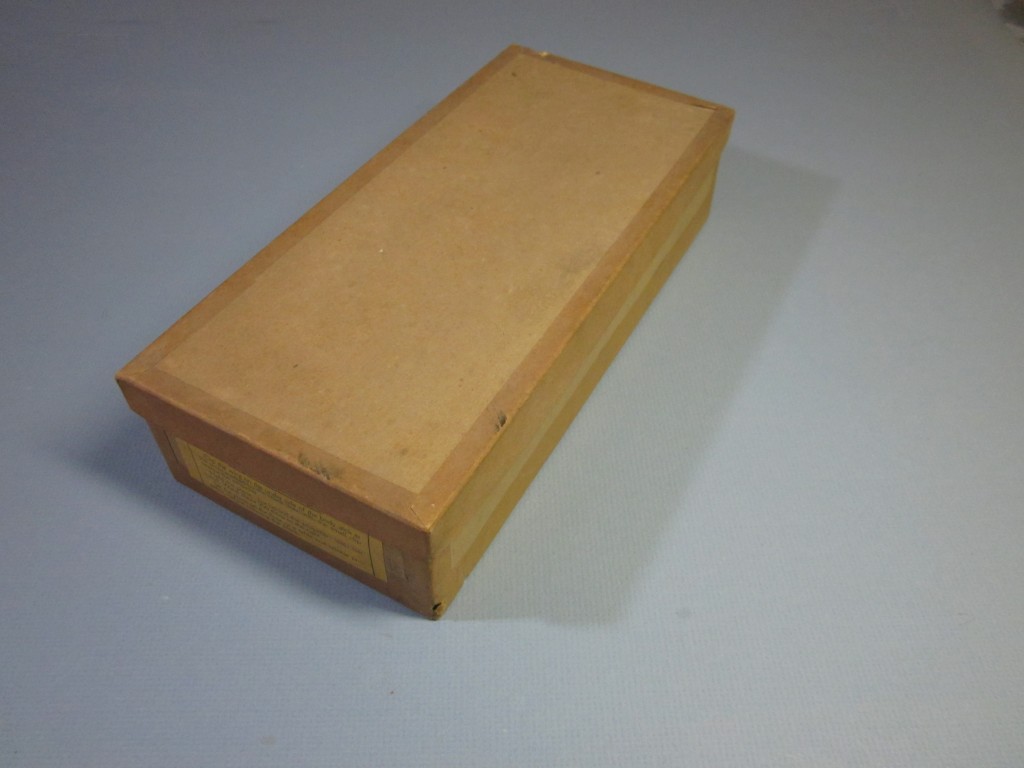
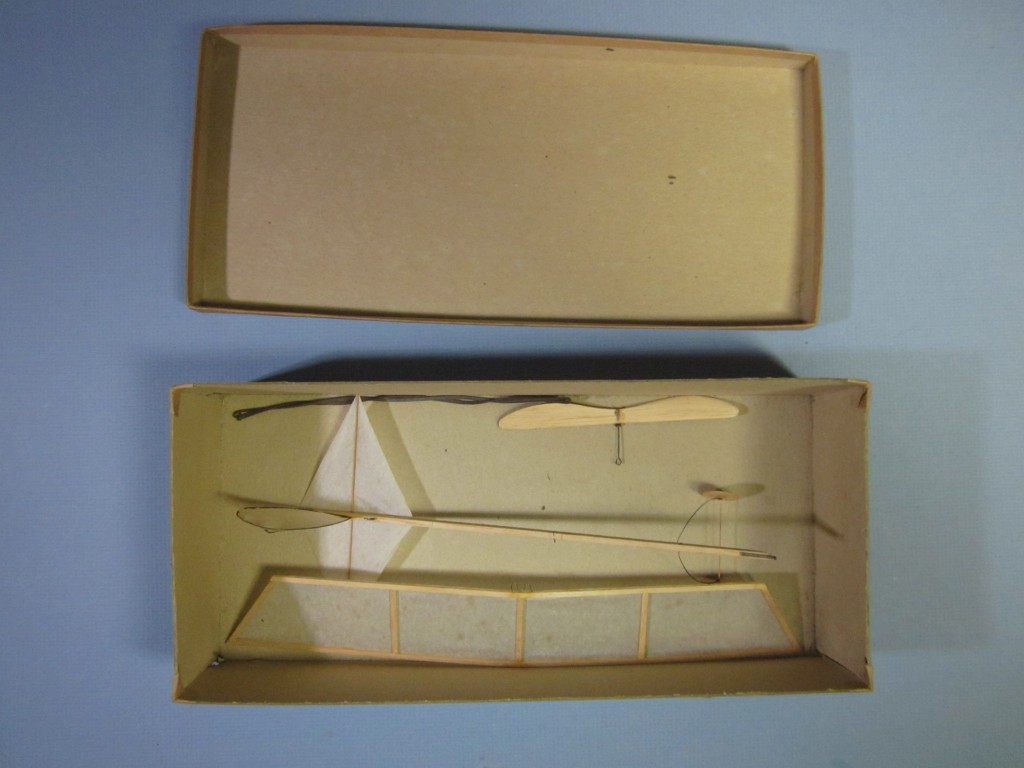
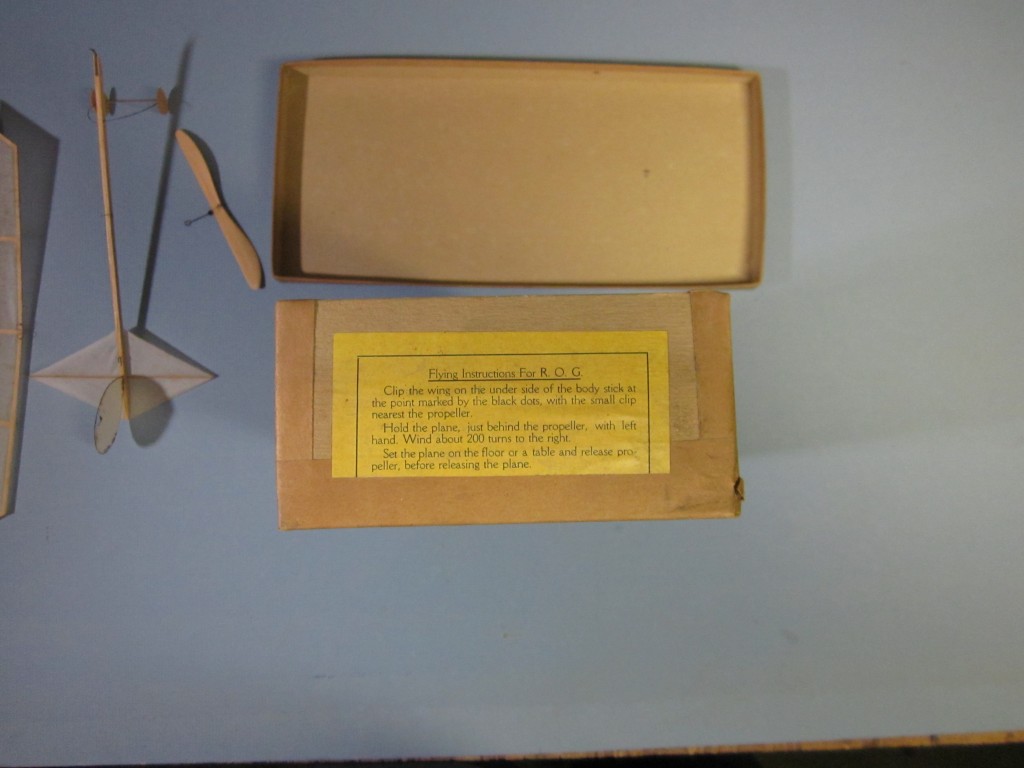
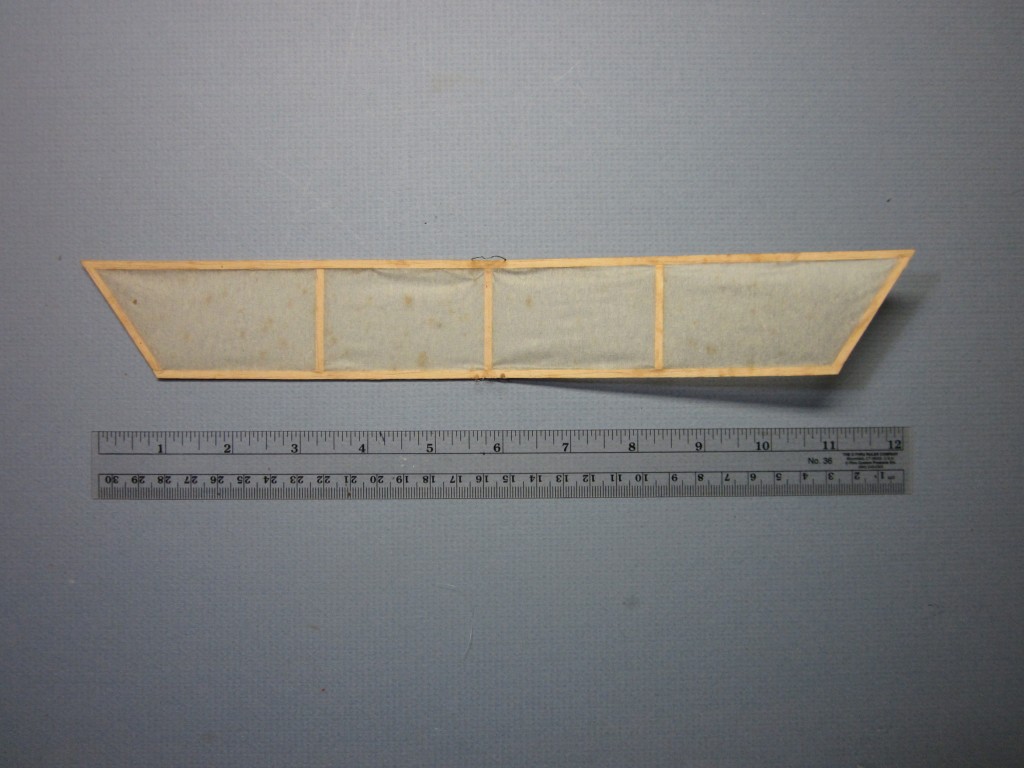
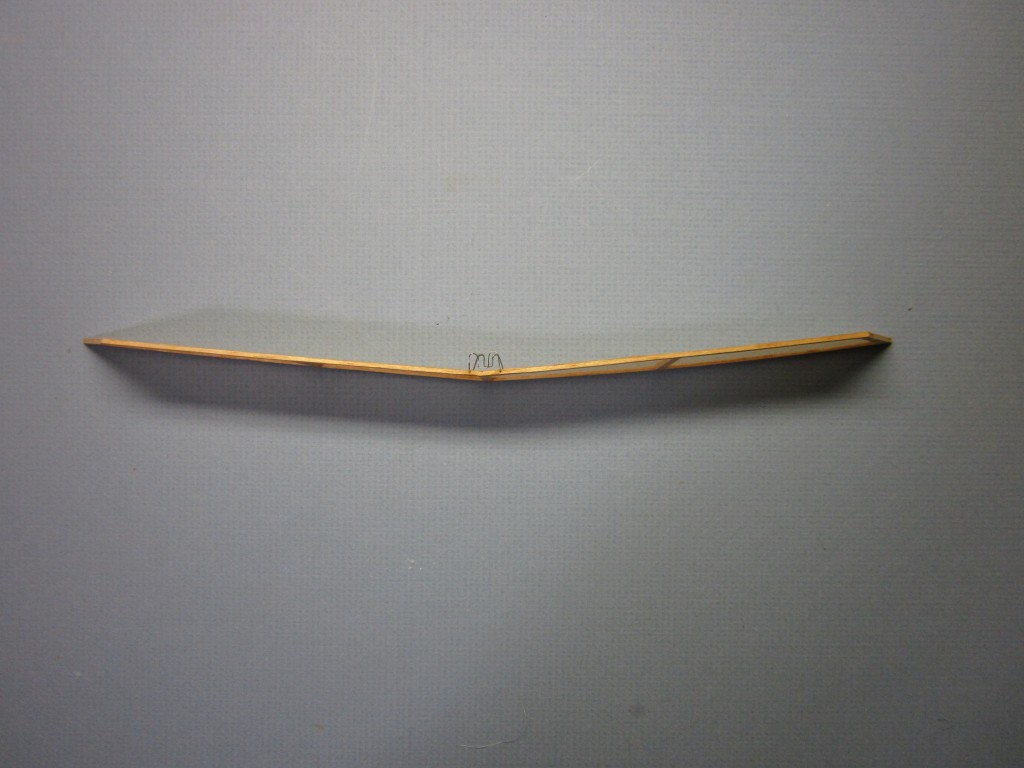
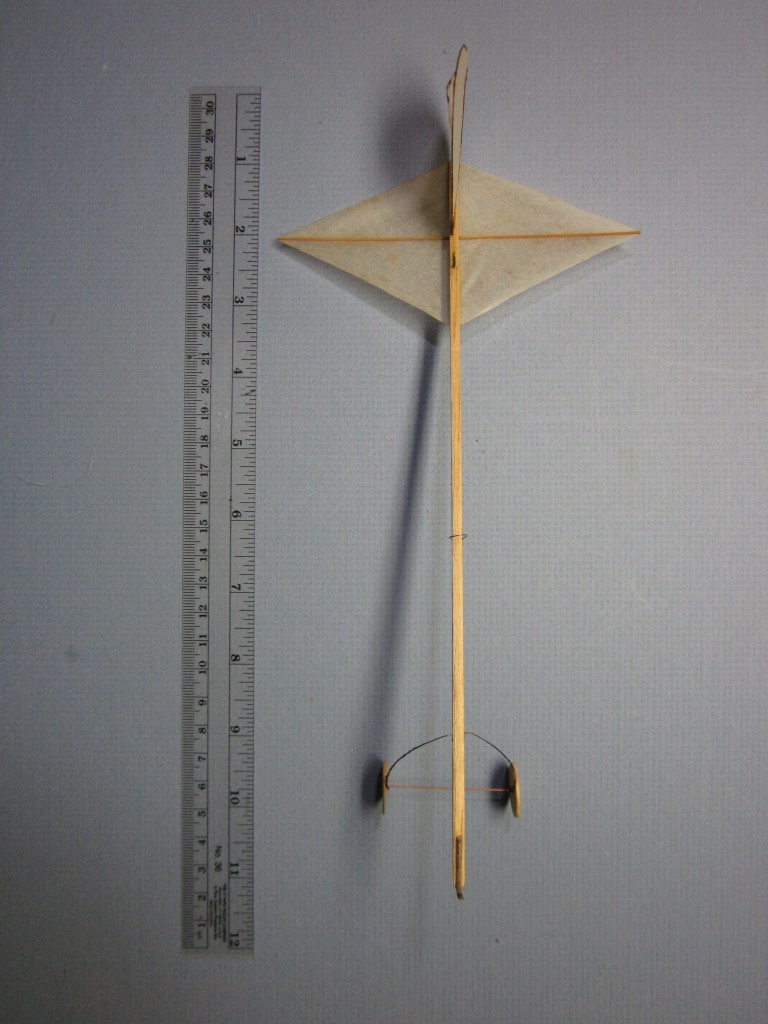
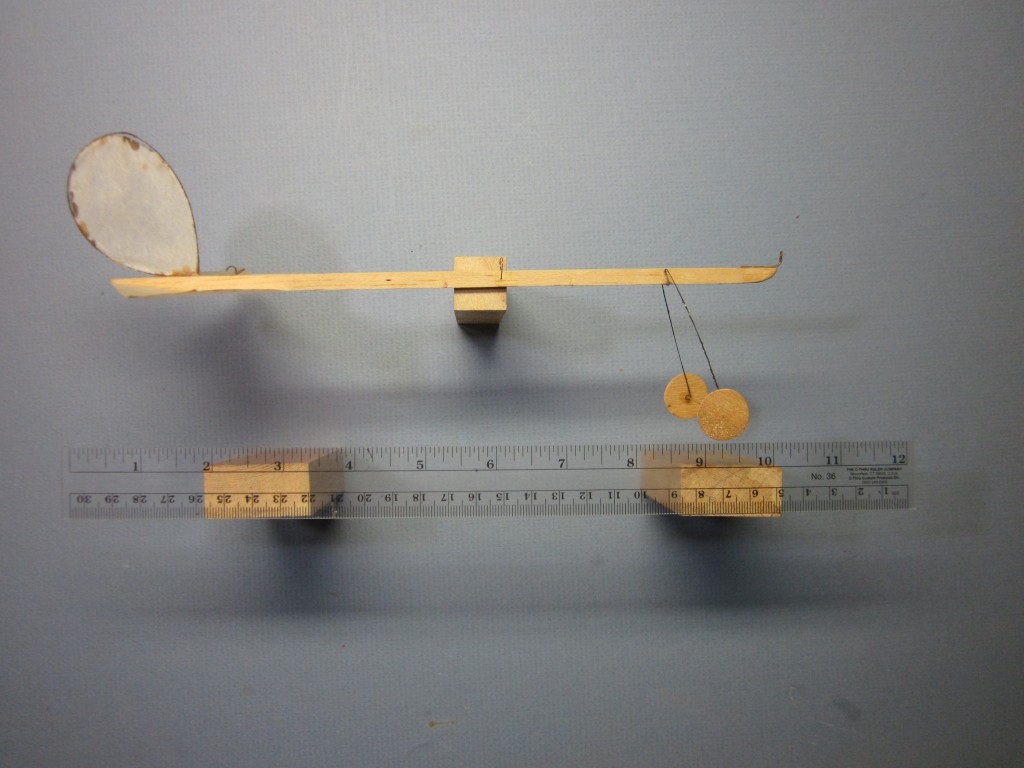
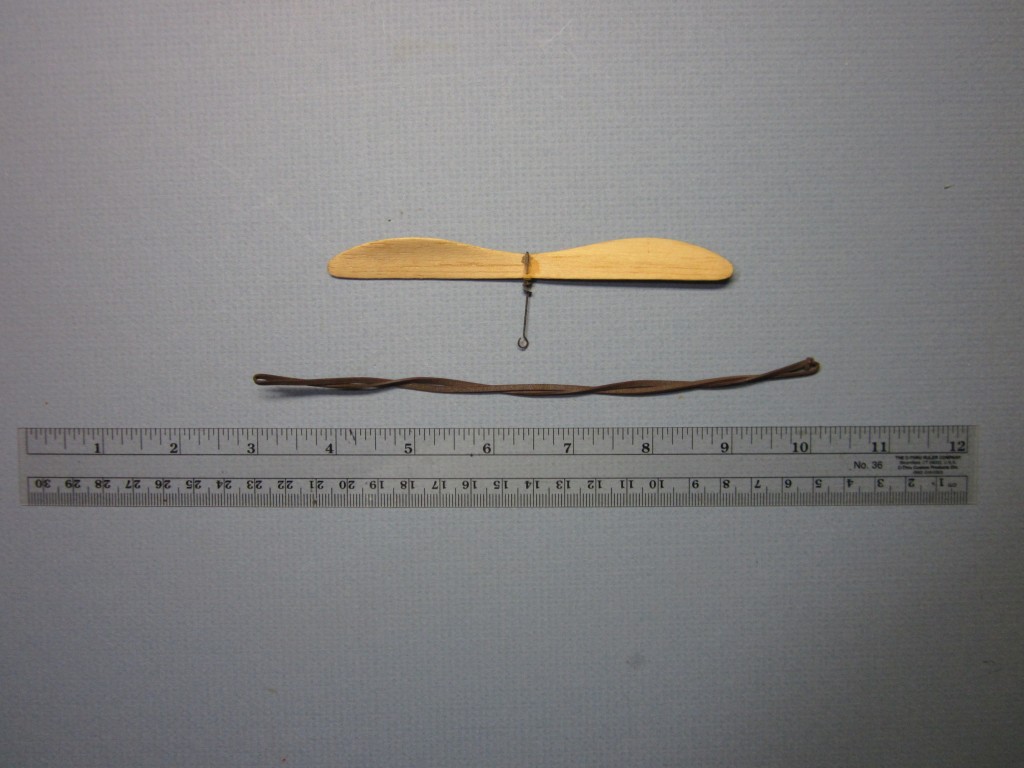
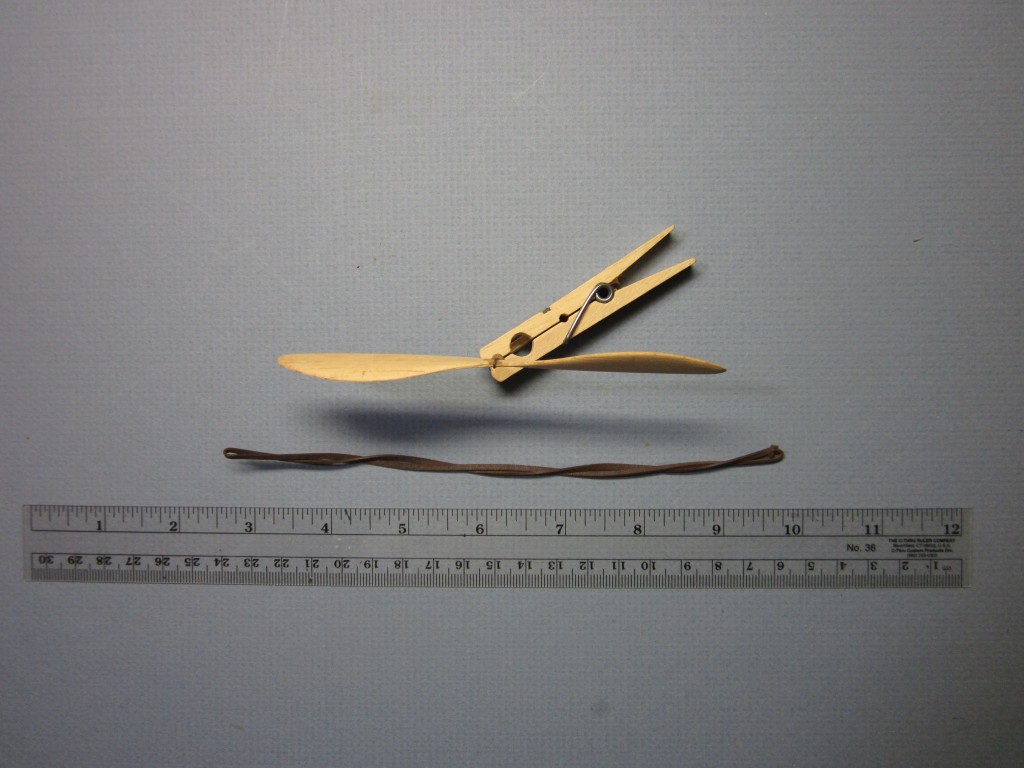
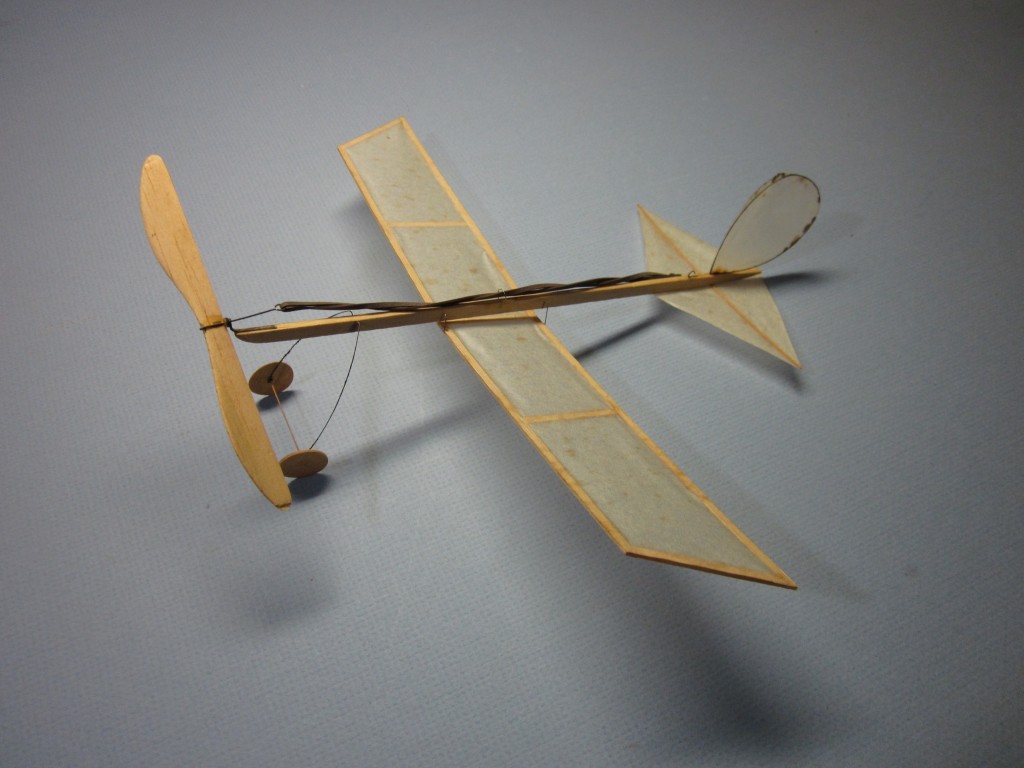
Wow this looks like a great flying mobile how much for a personal plane like that?
These are not being made any more. This is 1927 technology. The use of wire and bamboo framing is not current. If you want one, you must make it yourself. I have provided information for similar models.
A balsa version is available from Peck-Polymers.
There are similar simple ROG models available from other manufacturers, see our suppliers page.
Did you ever build a copy or a tutorial?
I would love to build one.
I have cut out parts, but have not completed construction or a tutorial. Most of these Baby ROG types are simple enough that just about anyone could make one from the plan. The plans were usually published in newspapers at a fraction of full size and builders made them.
What a great find for your collection. With luck an old timer will say they had one just like it. We will then have the history as close as they recall. I will buy your date of build as you have used good assumptions. Can you even imagine models back then? The modelers were thinking the theory of flight for the first time. It must have been complete amazement of all who were at the park.